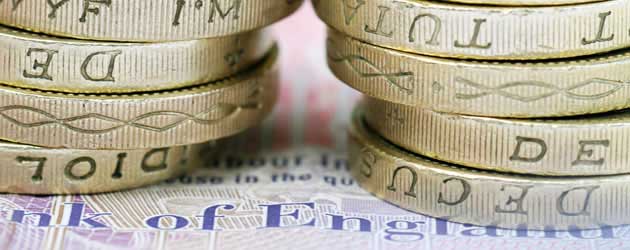
Following Markit’s private sector PMI reports for Manufacturing, Construction & Services we now know that British growth is likely to have accelerated during the fourth quarter of 2013, but that it began to cool down near the tail-end.
We also know that, despite concerns from some areas of the market over the efficacy of the British economic revival, currency traders are fairly happy to allow Sterling to remain at elevated levels against the majors because of the Bank of England’s forward guidance that rates will be raised when Unemployment falls to the 7.0% threshold.
The Manufacturing PMI fell from a 3-year high of 58.1 to register a score of 57.3 in December. The mildly weaker-than-expected print allowed traders to cash-in on profitable Sterling positions, but ultimately investors were reluctant to react too rashly to the report, which featured a near-2.5-year high score for job creation and a near-22-year high reading for new orders.
The Construction PMI fell from 62.6 to 62.1 in December, but came in slightly stronger than the median forecast of 62.0. Once again, it was solid improvements in the jobs section of the report – a seventh consecutive month of expansion – that cheered investors and allowed Sterling to sail along relatively unchallenged, despite a drop-off in overall output.
The Service Sector PMI, which accounts for a mammoth 70% of British Gross Domestic Product, came in at a 6-month low of 58.8, confounding predictions for a print above 60.0. Although Sterling did not rally in response to the private sector release, as it has done on previous occasions, the Pound was relatively unmoved by yesterday’s reading. This is because the job creation element of the report printed at its second highest level since 2006.
Overall the Composite PMI of all three indexes came in at 59.5, which is the lowest score since July last year.
Interestingly, the Pound is still trading above 1.6400 against the US Dollar and Sterling has also remained buoyant above 1.2000 against the Euro.
This tells us that Sterling’s impressive 5.3% annual improvement in 2013 is likely to be upheld, even if private sector output begins to cool off, as long as the labour market continues to improve faster than the BoE’s estimates.
In the long term it will be interesting to see how long British GDP can be supported by private spending – something which cannot continue indefinitely whilst wage growth lags behind inflation. The hope is that as firms become more confident, hiring will increase, wages will begin to rise and this will in turn fuel further spending as the snowball of optimism expands.
In the meantime it seems that the Sterling exchange rate will continue to be supported by rate hike speculation as Unemployment falls steadily towards the Bank’s 7.0% threshold; at this moment in time sustainable economic growth is less important than the Bank of England’s rate outlook in the eyes of speculative investors.

Comments are closed.